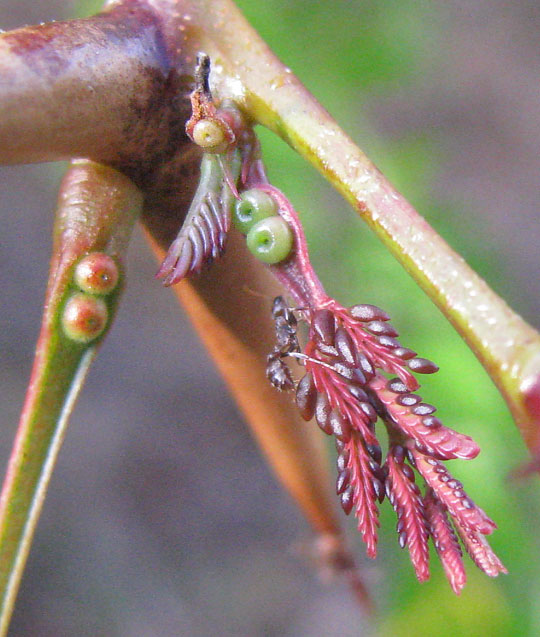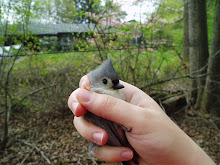~Dan Janzen (1966)
Whatever you decide to call them, myrmecophytes (ant-plants) are an interesting area of research. I recently wrote a term paper on the subject because they came up in the chapter on mutualisms and I couldn't stop thinking about them.
This is a bullhorn acacia tree; similar trees live in the tropics around the world:

This is a South American acacia-ant, Pseudomyrmex ferruginea (sorry, it's sort of blurry):

These species need each other to survive. The acacia produces enormous thorns, which a recently mated queen can hollow out to build the first chamber of her colony. She lays eggs and cares for them by using food provided by the plant in the form of extrafloral nectaries (glands on the tree that produce nectar) and Beltian bodies (small blobs of protein that grow at the end of leaflets). As the colony grows, they hollow out more thorns to use as brood chambers and for other purposes.
Sounds great for the ants, but what does the tree get for giving so much? Easy -- the tree gets a standing army, equipped with painful stingers and biting mandibles. The colony of ants protects the tree from all herbivores, both small (they will either kill or carry away any insects that try to eat the leaves) and large (those stings are effective on large mammalian herbivores as well!).
The ants also act as a landscaping crew. The workers use their powerful jaws to mangle any vines that attempt to climb the tree and destroy any saplings growing within a certain radius. Acacias are susceptible to being shaded out by other trees, so this landscaping is of great importance to the tree's survival.
Mutualistic ants are critical for the tree's wellbeing. In fact, if the ants are experimentally removed from an acacia, the tree is rapidly destroyed by herbivores. (Janzen found this in his landmark study in 1966, the source of the introductory quote.) It is believed that ants have taken over the role of secondary plant chemicals, which normally function as the plants' defense against herbivores. Rather than increasing the toxicity of their leaves, this group of acacias has lost their secondary chemicals and have gained instead a standing army.
This relationship has, not surprisingly, been parasitized by closely related species of ants. You can learn more about this, and the role that large herbivores play, in this video.
There's a lot more to tell about this relationship, but this post is getting long. I wrote a term paper on it, so let me know if you want more ant-plants and plant-ants!
Links: More photos of acacias; "Weird Plants"; a webpage comparing the symbiosis between ants and plants to a nuclear reactor (welcome to the Internet!).




1 comment:
Very interesting post - I like how it starts with the quote about ant-plants and plant-ants; makes me wonder how the adjectives would be attached in Spanish - fun with languages!
I would say an interested follow up to your "5 scariest insects that can destroy you" post from way back would be a comment on the bullet-army ant things that were imagined in the latest Indiana Jones. Cool stuff.
-Sharon
Post a Comment